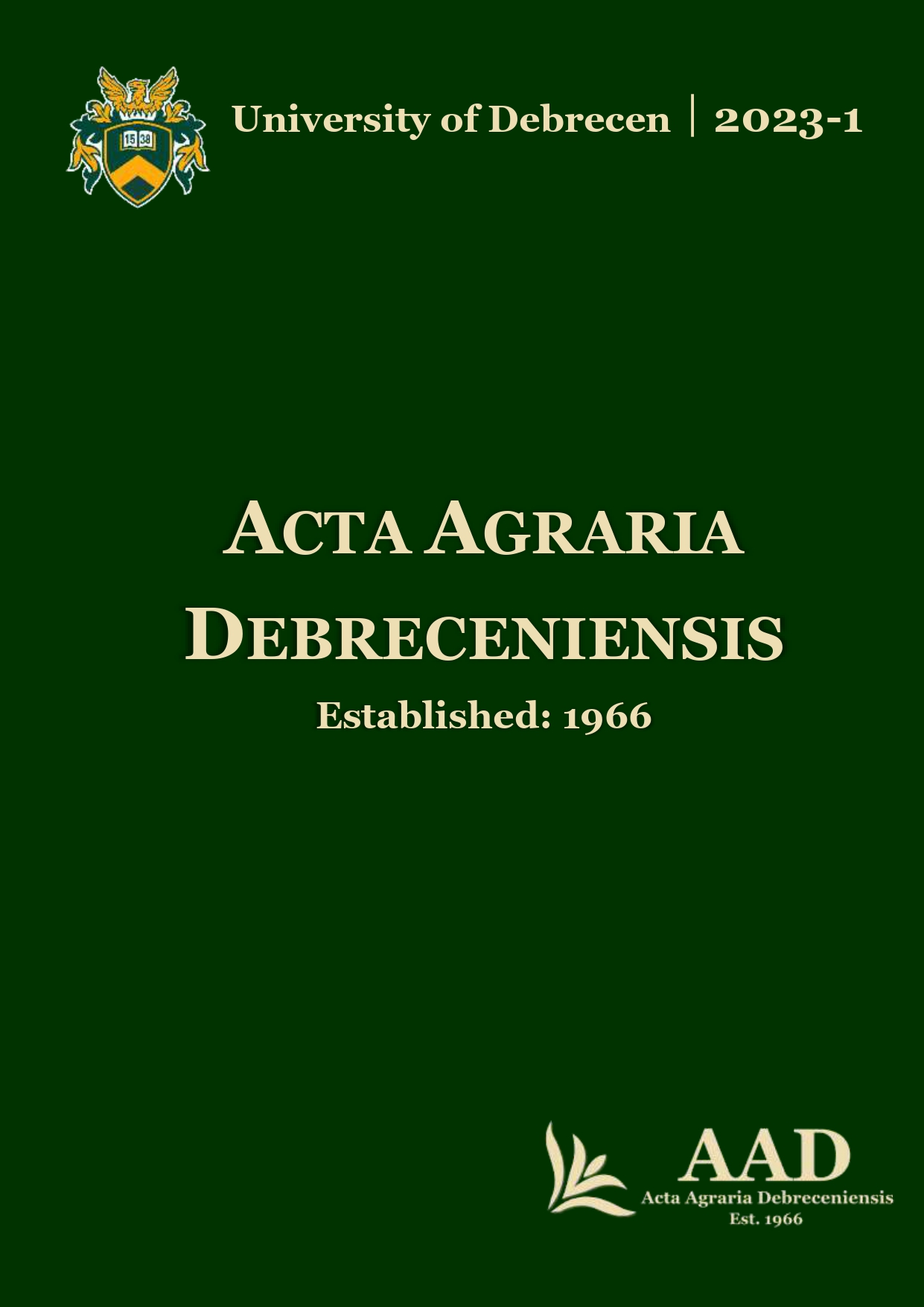Economics of site specific crop density in precision sunflower (Helianthus annuus L.) production
Authors
View
Keywords
License
Copyright (c) 2023 by the Author(s)

This work is licensed under a Creative Commons Attribution 4.0 International License.
How To Cite
Accepted 2023-03-08
Published 2023-06-05
Abstract
In this research, the crop density of sunflower was examined, which, thanks to the tools available for precision crop production and knowledge of the market environment of sunflower production, best fits the heterogeneous areas of the given production zones and meets the economic requirements. These components together directly influence the effectiveness of sunflower production. In the year of 2021 and 2022, we carried out a site-specific crop density sunflower experiment in two fields with the same soil type, by sowing significantly different amounts of seeds within the given zones. We have established that the sunflower, although a plant with excellent adaptability, reacts sensitively to the place of production and the effect of the year, in zones with heterogeneous productivity, and shows a reaction to sowing with a variable number of seeds per zone, even when examined based on economic aspects.
References
- Antal, J. (1992): Napraforgó éghajlatigénye. In Szántóföldi növénytermesztés, Szerk. Bocz E., Mezőgazda Kiadó, Budapest
- Frank, J. (1999): A napraforgó biológiája, termesztése. Mezőgazda Kiadó, Budapest 210-221. ISBN:9639239003
- Mesterhazi, P.A. (2003): Development of measurement technique for GPS-aided plant production. PhD Thesis, University of West-Hungary
- Milics, G. (2008): A térinformatika és a távérzékelés alkalmazása a precíziós (helyspecifikus) növénytermesztésben. PhD Thesis, University of Pecs
- Monoki, Sz. (2011): Integrált és konvencionális növényvédelmi programok fenntarthatósági vizsgálata DEXiPM modell alkalmazásával. Diplomadolgozat, Szent István University, Gödöllő
- Moore, I.D.–Gessler, E.–Nielsen, G.A.–Peterson, G.A. (1993): Terrain analysis for soil specific crop management. Second International Conference on Site-Specific Management for Agricultural Systems, 27–51.
- Novák, A. (2012): Az állománysűrűség és az évjárat hatásának vizsgálata a napraforgóban. In: Alap és alkalmazott kutatások eredményei a növénytudományokban. Szerk.: Szabó András, Debreceni Egyetemi Kiadó, Debrecen, 39–46. 2012. ISBN: 9786155183171
- Pepó, P. (2008): Az olajnövények termesztésének helyzete, a napraforgó termesztéstechnológiájának, tápanyagellátottságának fejlesztése. Agrofórum 19. 11. 10–14.
- Pepó, P. (2012): Kockázatok és lehetőségek a napraforgó-termesztésben. Gyakorlati Agrofórum 23. 44. 20–28.
- Pepó, P. (2018): Napraforgó-termesztésünk válaszúton. Magyar Mezőgazdaság 41. On-line [https://magyarmezogazdasag.hu/2018/10/11/napraforgo-termesztesunk-valaszuton]
- Sellye, F. (1990): A szántóföldi növénytermelés optimális szerkezetének meghatározása. Gazdálkodás, XXXIV. No. 10. 44–54.
- Szabó, A. (2007): Az állománysűrűség hatása a napraforgó hibridek termésmennyiségére, termésbiztonságára és minőségére. PhD Thesis, University of Debrecen
- Tótin, A.–Pepó, P. (2016): A vetésidő és tőszám hatása három kukorica hibrid kelés- és növekedés-dinamikájára. Agrártudományi Közlemények 68. 105–110.

 https://doi.org/10.34101/actaagrar/1/12042
https://doi.org/10.34101/actaagrar/1/12042